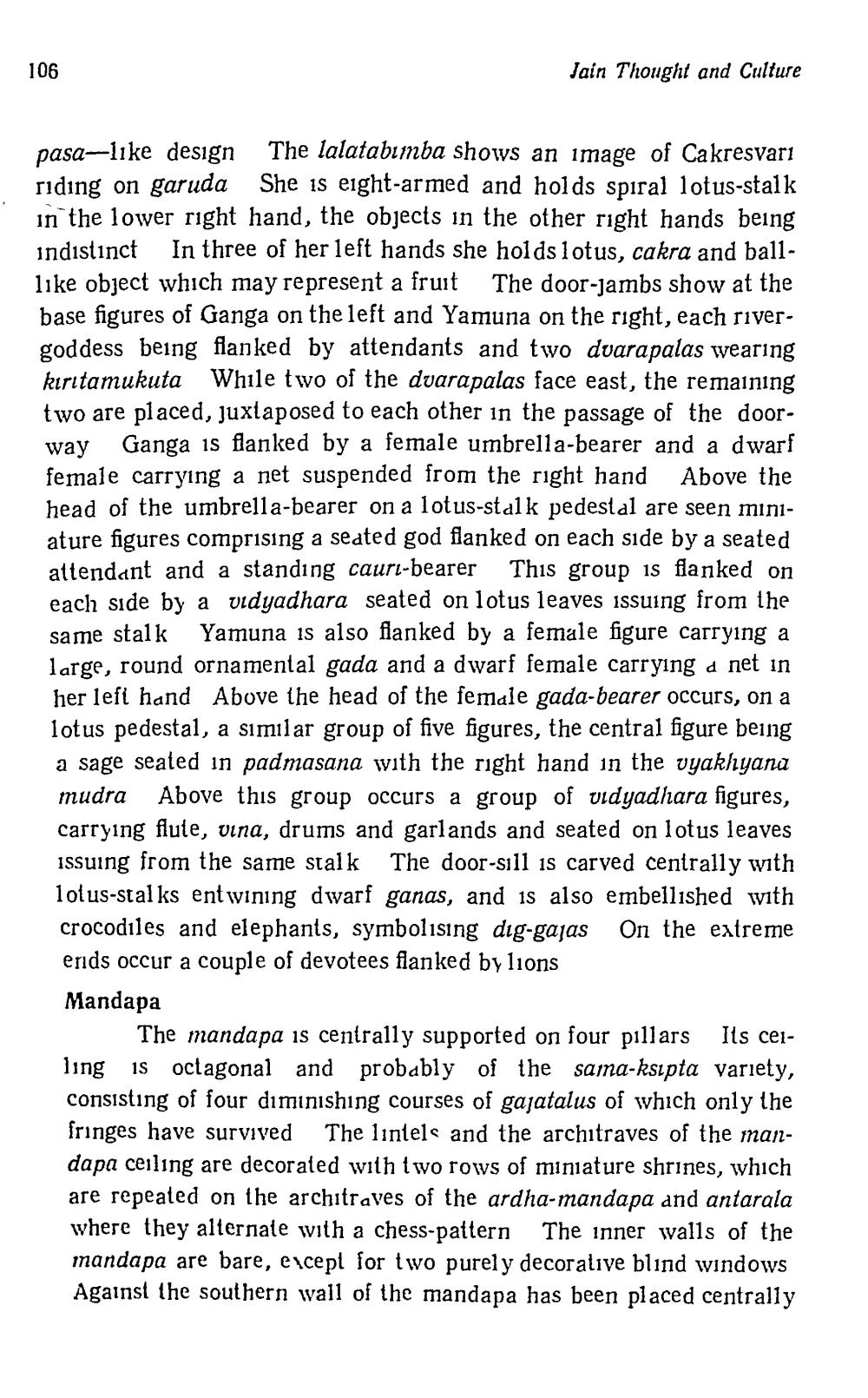________________
106
Jain Thought and Culture
pasa-like design The lalatabımba shows an image of Cakresvarı riding on garuda She is eight-armed and holds spiral lotus-stalk in the lower right hand, the objects in the other right hands being indistinct in three of her left hands she holds lotus, cakra and balllike object which may represent a fruit The door-jambs show at the base figures of Ganga on the left and Yamuna on the right, each rivergoddess being flanked by attendants and two dvarapalas wearing kırıtamukuta While two of the dvarapalas face east, the remaining two are placed, juxtaposed to each other in the passage of the doorway Ganga is flanked by a female umbrella-bearer and a dwarf female carrying a net suspended from the right hand Above the head of the umbrella-bearer on a lotus-stalk pedestal are seen miniature figures comprising a seated god ianked on each side by a seated attendant and a standing cauri-bearer This group is flanked on each side by a vidyadhara seated on lotus leaves issuing from the same stalk Yamuna is also flanked by a female figure carrying a large, round ornamental gada and a dwarf female carrying a net in her left hand Above the head of the female gada-bearer occurs, on a lotus pedestal, a similar group of five figures, the central figure being a sage sealed in padmasana with the right hand in the vyakhyana mudra Above this group occurs a group of vidyadhara figures, carrying flute, vina, drums and garlands and seated on lotus leaves issuing from the same stalk The door-sill is carved centrally with lotus-stalks entwining dwarf ganas, and is also embellished with crocodiles and elephants, symbolising dig-gajas on the extreme ends occur a couple of devotees flanked by lions Mandapa
The mandapa is centrally supported on four pillars Its ceiling is octagonal and probably of the sama-ksipta variety, consisting of four diminishing courses of gajatalus of which only the fringes have survived The lintels and the architraves of the mandapa ceiling are decorated with two rows of miniature shrines, which are repeated on the architraves of the ardha-mandapa and antarala where they alternate with a chess-pattern The inner walls of the mandapa are bare, except for two purely decoralive blind windows Against the southern wall of the mandapa has been placed centrally




